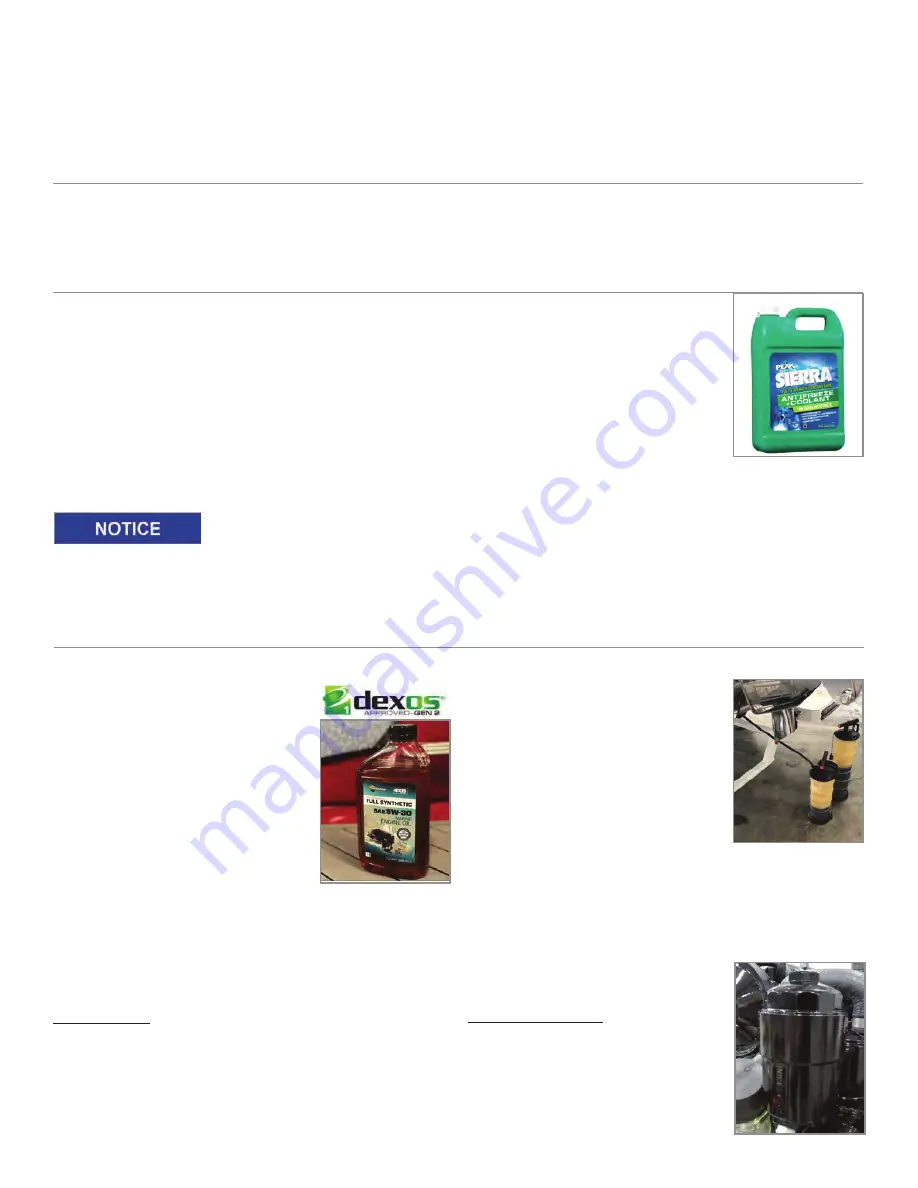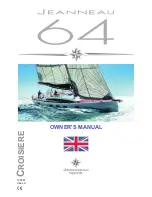
drain hose through the transom drain
plug location (with the boat out of the
water; removing the transom drain plug
while in the water could result in the boat
taking on water and sinking.
Because the line will not feed through
the drain plug with the line cap on, raise
the line above the oil pan. This creates a
P-Trap as the end of the drain hose is fed
through the transom drain plug to allow
the gravitational flow of used oil.
• If a siphon pump is available, remove the drain line cap, create a
seal on the siphon hose and start the pump.
About eight-to-nine (8-9) quarts of used oil should drain into
the catch container. Typically, engines burn a small amount of
oil during operation. An authorized Malibu dealer technician
can advise you whether you should be
concerned about the amount of oil used
between oil changes.
Replacing the Oil Filter:
• Oil filters are located on the front of the
engine.
• Remove the oil filter housing cap.
• Use a tool designed for removal or
installation of oil filters only. Other tools
may crush the filter and release used oil
analysis. Failure to immediately address
overheating issues can void the warranty.
The closed cooling operates on a
50/50 mix of marine-grade coolant
(propyleneglycol) such as Peak Sierra Brand
and clean, distilled water. (Some brands sell
coolant conveniently pre-mixed. Be sure
to read the label carefully, and do not add any water to coolants
that are pre-mixed. This will dilute them to unacceptable levels of
mixture.) When mixing coolant and distilled water, do so in a clean
container. Dirt, oil, or other contaminants can cause damage to the
cooling system, which may not be covered under warranty.
In the LT4 engine, check both cooling containment units.
The coolant should be inspected after the first 25 hours and
annually. It should be changed every two (2) years, or if the glycol
does not meet the minimum freezing requirements for a given area
when tested with a refractometer, test strips, or ball tester.
,
Oil System
Replacing the oil filter and oil is an
important part of the annual maintenance.
Due to environmental concerns, Malibu
recommends having an authorized Malibu
dealer complete this important function. For
those who feel confident they can complete
this maintenance step with guidance, the
following steps must be followed.
Have nine quarts of 5W30 synthetic
engine oil available for the 5.3L or 6.2L
M-Series engines, and nine quarts of 0W40
full synthetic dexos™gen 2 oil for LT4 engines.
The use of any other oil or fluid may void the
warranty.
Malibu boats offers a full synthetic oil blended specifically
for Malibu engines. For more information about purchasing this oil
for use in your boat, contact your authorized Malibu dealer.
Whenever possible, run the boat for approximately five (5)
minutes on the water. This will heat up the oil to a better viscosity
for draining.
Draining the Oil:
• Have a drain pan or container ready. Never pour used oil on the
ground or into the water. This is illegal in most instances and has
a negative environmental impact.
The oil drain line is located on the side of the engine oil pan
through a fitting, and it is approximately four (4) feet long.
• If a siphon pump is not available for use in this process, run the
• Batteries should always be stored in a cool, dry location.
Manufacturers generally prefer batteries be stored on shelving
above floor level.
• Using an old toothbrush or similar bristled brush, and a mix
of baking soda and water, clean off the battery terminals and
cable ends, if they show any signs of corrosion. A small amount,
especially as batteries age, is not uncommon, but excessive
corrosion could be a sign of future service interruptions, and
it should be brought to the attention of your authorized Malibu
dealer. Allow the terminals and cable ends to air dry.
• Clean the battery lugs with a wire brush.
Following the storage period, reverse the above steps to reinstall
the battery(ies).
Care and Maintenance—145
Pumps
The authorized Malibu dealer can inspect and repair/replace
ballast and bilge pumps that are not functioning properly. This is
both a safety matter and adds to the life of the boat’s systems. All
pumps will lose functionality over time as the internal components
are designed to be self-sacrificing during use, rather than allowing
debris to foul and damage more expensive and complex components
of these systems. Insist upon pump evaluations during annual
maintenance.
Coolant System
There are two elements to the coolant system in Malibu boats:
the closed-cooling system and the raw water intake system. Both
require attention on a regular basis. Depending on the body of water,
attention may need to be frequent.
Instructions for inspecting and cleaning the sea strainer (raw
water intake) are provided above, under
Before the Outing.
The following information concerns the closed cooling system,
which should be checked at least annually, even if there have been
no instances of overheating during outings:
Any time the engine temperature
rises above normal operating levels
(approximately 155-175 degrees)
operators must determine the source of the overheating and
address the issue. Often, it may be caused by debris in the sea
strainer (raw water intake). If cleaning the sea strainer does
not result in lower operating engine temperature, have the boat
towed to shore and take it to an authorized Malibu dealer for
















































